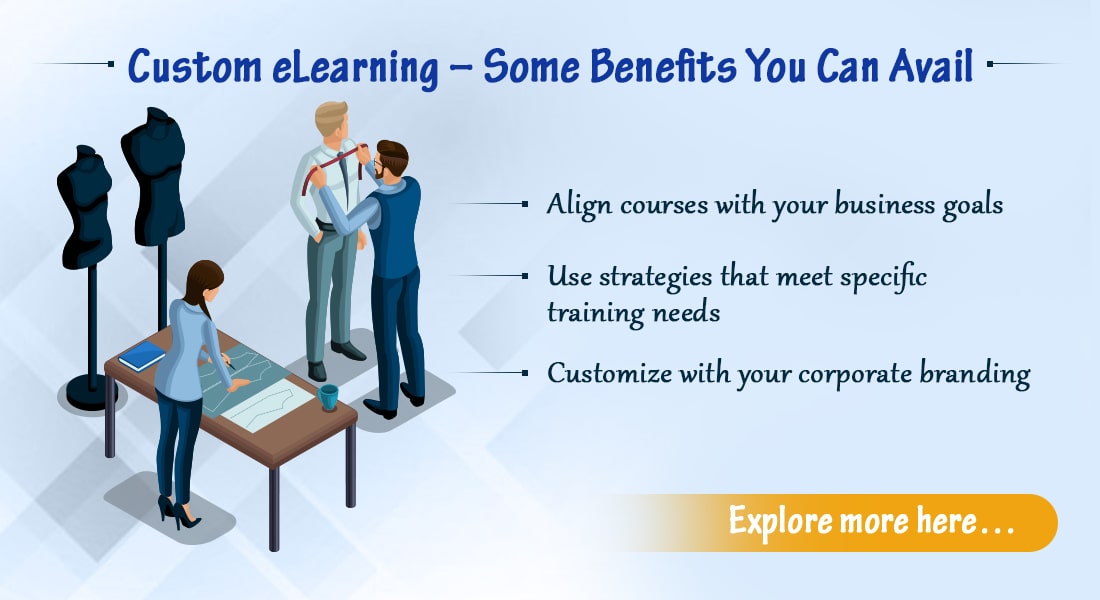Aligning Training with Business Goals: 5 Steps Strategy to Business Success
Organizations aligning their training to business goals witness a 40% increase in business. But, faltering on where and how to start? Read this blog to know the 5-steps strategy to align training with business goals.

We all know providing effective learning and development opportunities to employees is imperative when it comes to helping an organization create and sustain competitive advantage. According to Bersin by Deloitte, organizations that focus on skill development of their employees have 37% more employee productivity, and are 32% more likely to be first in the market. But, organizations that align training with their business goals will at least witness a 40% more increase in their key business metrics than others (Brandon Hall Group’s 2018 Learning Strategy Survey). In fact, 78% organizations do feel it is crucial to align their training strategy with business goals.
5 Steps to Align Training with Business Goals
- Plan in accordance with long-term business goals
- Identify the training and knowledge gaps
- Decide the optimal training modalities
- Communicate the training process to C-Suite
- Ensure scope for continual learning
However, despite these numbers speaking volumes, only 36% of organizations have a training strategy that is aligned to their business goals. Why is there such an enormous disconnect? If organizations know it is beneficial to align learning with business goals, why are only a few able to achieve it?
The answer being, most organizations falter on where and how to start. Is your organization also struggling with a similar situation? Let’s see how this can be avoided by following the 5-step strategy for aligning training with business goals.
1. Planning in Accordance with Future
To begin with, to align training with business goals, your organization needs to understand and decide on the long-term goals of the business, and analyze what can be supported by training. It is important to evaluate the nature of the goal in consideration with the business. For instance, your goals can be- reduction in expenses, revenue enhancement, or even compliance regulation.
- Reduction in Expenses: If your business goal is to reduce expenses, the training can be in the form of refresher courses that will help in reducing errors and rework on a procedure. The new information via the training will equip your employees with the necessary skills, hence enhancing productivity. Additionally, for many organizations, training can also help in moving over from their reliance on expensive external support.
- Revenue Enhancement: If your business goal is to increase your revenue, the focus of your organization should be on sales training that aims at enhancing sales. For instance, courses such as customer satisfaction can be deployed to ensure your organization increases customers who return as well as recommend your products and services to others.
- Regulatory Compliance: Your organization will need to develop compliance courses that aim at preventing errors and fines from regulatory agencies.
Hence, it is imperative to understand how training programs will cater to your organizational requirements. And apart from knowing what training your organization needs, you also need to decide whether training is actually the solution.
2. Identifying the Gaps
Moving on, the next step entails finding out how well your employees are equipped to achieve the organizational vision. Do they have the necessary skills (or not), knowledge, and abilities? If they don’t, what’s missing? To find answers to these questions and identify the gaps, your organization will need to carry out an in-depth Training Needs Analysis (TNA) that will help in designing courses that are aligned to your business goals.
Ensure that the analysis is carried out keeping in mind the organizational goals as well as the training needs of employees, the latter being dependent on their present skillset and the knowledge gaps they need to fill, to achieve the desired performance. Once you are aware of the desired business goals, the training needs analysis should uncover:
- Capability Requirement: For instance, the business goal is to reduce expenses by driving down production cost and offering products at competitive rates. What competencies do employees need here? This implies your employees should be able to identify the errors or faults and eliminate or reduce wastage.
- Identification of Target Audience: Once you know the required capabilities that need to be developed, the next step is to identify the target employee groups who have the existing skillset similar to the ones that will be imparted and require them to apply those skills.
And, once you have identified the gaps, you can move on to deciding the delivery type that will suit bes
3. Deciding on the Perfect Training Modalities
When it comes to training, modalities imply different forms of learning, such as instructor-led training (ILT), eLearning, virtual classrooms, and much more. Choosing the right training type plays a pivotal role in aligning to the desired business goals. 52% of training managers prefer to have three to six modalities (such as video-based learning, microlearning, virtual classrooms, etc.) for their training courses, where ILT and eLearning usually serve as the foundation. The additional modalities are incorporated to adjust particular topics, learners, and the organization.
Figuring out which modalities are best for your training needs can be a herculean task and even fail if you don’t have a plan in place. You can consider these questions while deciding:
- Does the content call for memorization? Does it require hands-on training? Will learners require complete guidance?
- What modality would your audience prefer? Will learners deter if the course is text-heavy? Will they prefer a mobile app-based approach?
- What will be the physical location, technological accessibility, and time constraints of your employees?
Having answers to these questions will help you in assessing how long you want the training sessions to be and whether it fits in your training budget.
4. Communicating the Training Process
By now, you will clearly understand the purpose of the training and how undergoing it will benefit employees in achieving the desired business goals. It’s time you approach the top brass of the organization to seal the deal.
It is essential to communicate the purpose of the training and how it boosts in achieving long-term business goals. Since they are the decision-makers and hold much experience, keeping them in the loop makes for a clearer vision of the organizational goals and will ensure you’re on the right path.
Having communicated the training need, it will be clear whether investing on the training will justify the cost incurred. There insights will be helpful in developing more relevant and credible courses. Additionally, involving the C-Suite in the training programs makes way for the development of a more robust learning culture that not only helps in achieve the desired business goals but everyone in the organization.
5. Ensuring Scope for Continual Learning
Learning does not start when employees get started with a training program, nor does it stop when they complete the course. Employee learning is a continuous process, much like the growth of your organization.
To ensure the most effective learning outcomes, it is important to plan for before, during, and after the training program as well. Approaching the training as a journey is the right way to go. You can consider the following tips to ensure the learning process is a memorable experience for your learners:
- Teasers videos, pre-assessments, posters, etc. can be some ways to generate anticipation among learners and motivate them about taking a course. The more effortlessly learners absorb the information, the more willing will be the improvement.
- Ensure that there is ample scope for post-training reinforcement. For instance, you can suggest developing a series of post-training (micro modules which can be delivered on different mobile devices) learning activities that can be completed on-the-go. Repetition of training aids retention, which ensures employees are on the right track toward achieving the desired business goals.
Your training programs will play an imperative role in helping your employees perform to the highest expected standards of your organization. There should be no question when it comes to developing training programs that reflect higher business objectives and are set for maximizing ROI. Our eBook ROI and eLearning – Myths and Realities can give you more information on the steps to calculate ROI.





